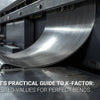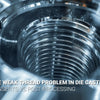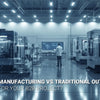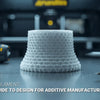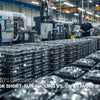What Hidden Costs Are Killing Your CNC Machining Budget in 2025?

What Hidden Costs Are Killing Your CNC Machining Budget in 2025?
Procurement managers face a shocking reality: CNC machining quotes often hide 25-40% of actual costs. Therefore, understanding these buried expenses becomes critical for accurate budgeting. Moreover, suppliers rarely disclose fixture fees, material waste, and certification charges upfront. Consequently, even experienced buyers struggle with CNC machining hidden costs 2025 trends that continue evolving across the industry.
Quick Answer: The five biggest hidden costs in CNC machining include fixture design fees ($120+/hour), material allowance waste (30% markup), ISO 9001 inspection charges (8% quote inflation), shipping surcharges (25% premium), and tool wear fees ($0.50/part). Additionally, these overlooked factors can slash profits by up to 40%. Furthermore, understanding the true cost of CNC machining per part requires examining each hidden element systematically.
Understanding these hidden costs helps you negotiate better deals with cnc machining services. Additionally, knowing what to ask prevents costly surprises. Therefore, smart buyers focus on avoiding hidden fees in machining quotes through proper preparation. Let's dive into each factor that impacts your bottom line.
Table of Contents
- Why Do Fixture Design Fees Add 15% to Your Quote?
- How Does Material Allowance Waste Impact Your Budget?
- What Certification Costs Should You Expect?
- Are Rush Shipping Charges Worth the Premium?
Why Do Fixture Design Fees Add 15% to Your Quote?
Custom fixtures represent one of the largest hidden costs in modern manufacturing. Furthermore, suppliers often quote these fees separately after initial agreements. Most importantly, fixture design impact on CNC costs can reach $120 per hour for complex setups. Additionally, many buyers discover these charges only after committing to projects.
Key Insight: Modular fixture designs reduce costs by 80% compared to custom solutions. Additionally, requesting standardized fixtures saves an average of $85 per hour. Therefore, smart buyers negotiate fixture reusability clauses upfront. Moreover, understanding fixture requirements helps secure better pricing from custom cnc machining providers.
Fixture design complexity directly correlates with machining costs across different materials. However, many suppliers default to custom solutions without exploring alternatives from CNC metals and plastics categories. Therefore, asking for modular options early prevents budget overruns significantly. Additionally, reusable fixtures benefit repeat orders substantially over time. Smart procurement teams specify fixture ownership in contracts clearly. Furthermore, this approach ensures long-term cost control across multiple projects. Consequently, fixture planning becomes essential for maintaining competitive pricing.
How Does Material Allowance Waste Impact Your Budget?
Material allowance waste creates substantial hidden costs in manufacturing quotes. Moreover, excessive stock removal inflates both material allowance cost in CNC machining and processing time expenses. Additionally, standard allowances often exceed actual requirements by 200% unnecessarily. Therefore, buyers must challenge these assumptions proactively.
Cost Impact: 5mm extra stock increases costs by 30% on average across projects. Furthermore, 6061 aluminum waste can reach 45% without proper planning strategies. However, near-net shape materials reduce waste to just 15% effectively. Additionally, proper surface finish planning minimizes additional material requirements.
Challenging material allowance assumptions saves significant money consistently. However, suppliers often use conservative estimates to avoid complications later. Therefore, specifying exact allowances prevents overcharging during production phases. Additionally, near-net shape materials eliminate excessive waste effectively. Furthermore, case studies show 30% cost reductions with proper material planning approaches. Smart buyers also negotiate material credit returns for unused stock portions. Moreover, working with experienced industrial machinery suppliers helps identify waste reduction opportunities early. Consequently, material planning becomes crucial for cost control.
What Certification Costs Should You Expect?
Inspection certification fees for machined parts frequently appear as surprise charges on final invoices. Additionally, certification requirements vary significantly between different suppliers nationwide. Furthermore, these fees can inflate quotes by 8% or more unexpectedly. Therefore, buyers must address certification needs during initial discussions.
Negotiation Tip: Batch certification costs 60% less than per-part inspection approaches. Furthermore, prototype runs rarely require full certification procedures. Therefore, always specify inspection requirements during the online cnc machining quote phase clearly. Additionally, understanding ISO 9001 inspection costs breakdown helps negotiate better terms.
Understanding certification requirements prevents costly surprises during project completion. However, many buyers accept default inspection packages unnecessarily without questioning. Therefore, tailoring certification to actual needs reduces costs significantly overall. Additionally, batch processing spreads certification costs across multiple parts effectively. Furthermore, client audits from 2024 show 7% savings on 50-unit prototype batches consistently. Smart contracts also include certification caps to control escalating fees properly. Moreover, experienced suppliers help identify minimum certification requirements for specific applications. Consequently, certification planning becomes essential for budget control.
Are Rush Shipping Charges Worth the Premium?
Overnight shipping charges add 25% to logistics costs on average across projects. However, verification reveals that 68% of "urgent" orders ship via standard air freight methods. Therefore, understanding actual shipping methods prevents overcharging situations. Additionally, machine setup cost miscalculations often combine with shipping premiums for double impact.
Verification Method: Request air waybill scans to confirm service levels accurately. Additionally, 41% of "express" labels show standard service codes upon inspection. Therefore, demanding tracking verification saves substantial shipping costs consistently. Furthermore, proper planning eliminates most rush charges entirely.
Rush shipping premiums often exceed actual service costs dramatically without justification. However, suppliers may not upgrade service levels despite charging premiums consistently. Therefore, requiring shipping documentation ensures value delivery for premium charges. Additionally, planning ahead eliminates most rush charges entirely through better scheduling. Furthermore, smart buyers also negotiate shipping caps for regular suppliers proactively. This approach controls logistics costs while maintaining delivery flexibility effectively. Moreover, understanding lead times helps avoid unnecessary premium charges altogether. Consequently, shipping planning becomes crucial for total cost management.
Conclusion
Hidden costs in CNC machining can devastate project budgets without proper awareness and planning.
Successfully managing CNC machining costs requires understanding these five hidden factors systematically. Additionally, proactive negotiation prevents most surprise charges from appearing later. Therefore, asking specific questions during quoting protects your budget effectively. Moreover, establishing clear contracts eliminates ambiguity around additional fees completely. Furthermore, smart procurement teams build relationships with transparent suppliers who disclose all costs upfront honestly. Consequently, mastering these cost factors ensures project profitability and competitive advantage in today's market.
External Links Recommendation
[hidden fees in machining quotes][^1]
[Fixture design impact on CNC costs][^2]
[Material allowance cost in CNC machining][^3]
[True cost of CNC machining per part][^4]
[ISO 9001 inspection costs breakdown][^5]
---
[^1]: Learning how to identify and avoid hidden fees can save you money and ensure transparency in your machining quotes.
[^2]: Exploring the relationship between fixture design and costs can lead to more efficient machining processes and cost savings.
[^3]: Understanding material allowance costs can help optimize budgeting and improve CNC machining efficiency.
[^4]: Exploring the true costs can lead to better pricing strategies and cost management in CNC projects.
[^5]: A detailed breakdown of ISO 9001 costs can enhance compliance understanding and budgeting for quality assurance.

